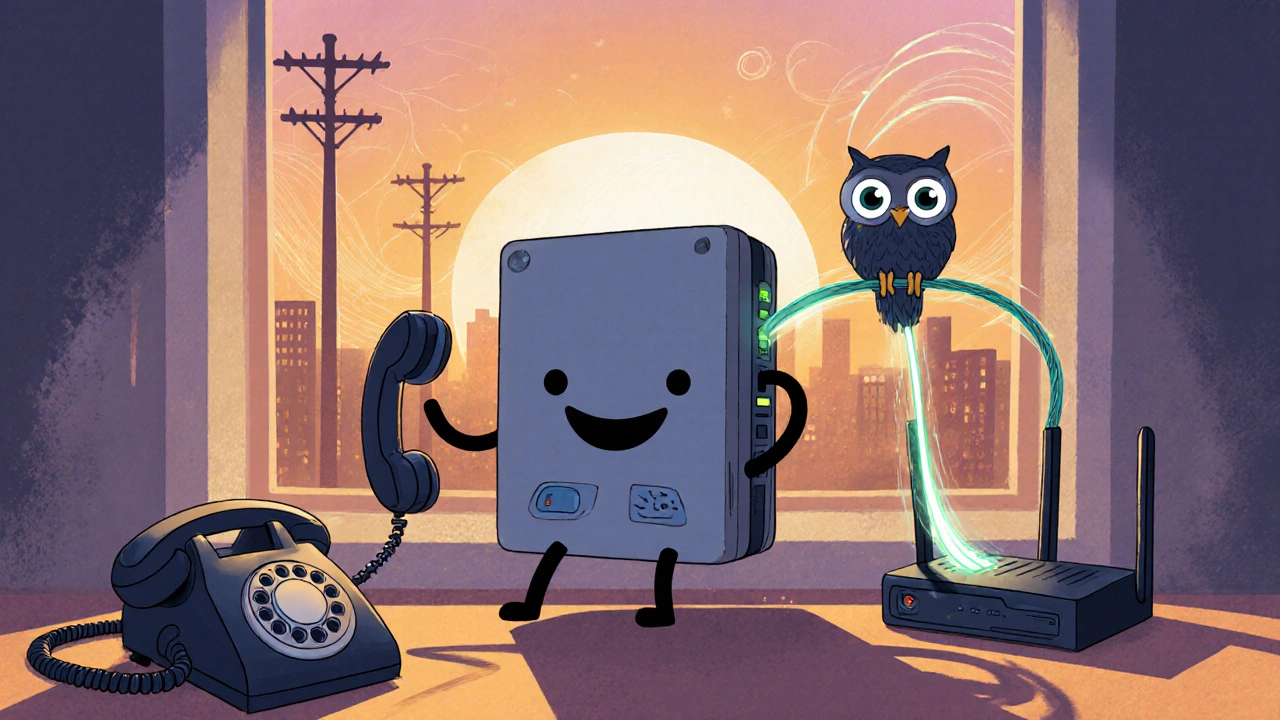ATA vs Landline: Which Phone System Saves You Money and Keeps Calls Clear?
When you're choosing between an Analog Telephone Adapter, a device that lets your old phone work over the internet and a traditional landline, a phone system that uses physical copper wires connected to the phone company, you're really picking between old-school reliability and modern savings. The ATA connects your regular phone to your home internet, turning it into a VoIP device. A landline? It’s the same system your grandparents used—no internet needed, just a wire from the wall. Both make calls. But one costs a fraction of the other.
Most people don’t realize how much they’re paying just to keep a landline. The average U.S. household spends $40 to $60 a month for basic service, plus extra for long distance or caller ID. With an ATA, you pay for internet—already there—and add a VoIP service that often costs $10 a month or less. You get unlimited calling, voicemail, call forwarding, and even international rates under a dollar a minute. No hidden fees. No contract. And if your internet goes down, your phone goes down too—that’s the trade-off. But for 95% of users, internet outages are rarer than a landline service disruption caused by a storm or cut cable.
Some still swear by landlines for reliability during power outages. But here’s the catch: most modern landlines now rely on internet-based backbones too, and they need power to work. If your house loses electricity, your cordless phone won’t ring—even if the copper line is intact. An ATA? Plug it into a UPS battery backup, and your phone keeps working. You can even use your smartphone as a backup by forwarding calls through a VoIP app. The landline’s biggest advantage? Emergency services. 911 calls from landlines automatically send your address. ATA calls can too, but you have to register your location manually. It’s one extra step, but it’s free and takes 30 seconds.
Businesses that still use landlines are often stuck in legacy systems. They think switching means replacing every phone. But with an ATA, you keep your existing handsets. No new hardware. No rewiring. Just plug the adapter into your router, connect your phone, and start saving. Many small offices use ATAs alongside cloud-based VoIP systems—some phones on Wi-Fi, some on analog through an ATA. It’s not about replacing everything. It’s about cutting waste.
Still unsure? Ask yourself: Do you need a phone that works during a hurricane when the power’s out? Then maybe keep a basic landline as backup. But if you’re paying more than $25 a month for phone service and you’re not using fax machines or dial-up, you’re overpaying. The ATA isn’t just a cheaper alternative—it’s the smarter one for almost everyone. The posts below show you how to set one up, which models work best, how to fix common audio issues, and why your current landline might be costing you more than you think.
